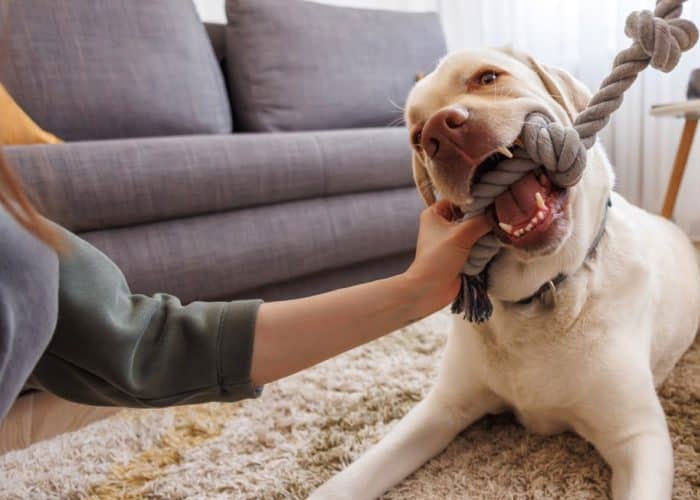Dog Bite Prevention: Educating Owners and the Public
Home » Dog Bite Prevention
Dog bites are a serious public health issue, with over 4.5 million dog bites occurring in the United States every year according to the Centers for Disease Control and Prevention (CDC). Children are the most common victims, but adults can suffer severe injuries as well. While most dog bites are from family pets, even well-trained dogs have the potential to bite. Education for both dog owners and the general public is key to reducing bites and their impact. Communities should prioritize accessible education around prevention.
Understanding Dog Behavior
To prevent dog bites, owners must understand normal dog behavior versus aggressive behavior. Dogs naturally use their mouths to communicate, but mouthing typically does not break the skin. Signs of aggression like baring teeth, tense muscles, growling, stalking, or attacking indicate a dog is feeling threatened and may escalate to biting if pushed. Staying calm, creating space, and avoiding eye contact can help diffuse tense situations before a bite occurs. Recognizing and responding appropriately to canine body language is a critical skill for owners.

Proper Socialization and Training
Many bites result from insufficient socialization and training. Puppies missing early positive interactions with people, other pets, noises, and environments can become fearful. Socialization should start as early as 3 weeks old. Ongoing positive training also reduces aggressive tendencies. Reward-based methods work best to reinforce good behaviors. Techniques using punishment or intimidation can actually worsen aggression over time. Owners should seek professional advice if struggling with training. Consistency with rewards and corrections is important when training dogs properly.
Supervising Interactions
Even friendly dogs should not be left alone with children or strangers. Their play may be misinterpreted as aggression or lead to accidental bites due to puppies’ sharp teeth. Small children should be taught how to properly interact with dogs to avoid bites – no pulling tails or ears, poking eyes, using loud voices, hugging tightly, or bothering dogs while eating. Parents should supervise all interactions and keep dogs and babies separate unless actively supervising. Allowing children to treat dogs like stuffed animals can lead to traumatic bites.
Secure Containment
Proper containment minimizes opportunities for bites and other dangerous interactions. Fences or leashes keep community members safe when taking dogs into public areas. At home, baby gates work well for separating dogs and children. Crates not only limit access when owners are away but provide a safe space for dogs themselves. If dogs exhibit territorial, possessive or reactive tendencies, owners may need professional help with containment solutions to avoid liability for bites. Secure gates and fences also protect dogs themselves from getting loose and injured.
Understanding Liability
Dog owners can be held legally responsible for bites depending on laws that vary by state and situation. Homeowner’s insurance may help cover medical bills or legal claims, but often excludes certain breeds considered prone to aggression. It is critical that owners educate themselves on local dangerous animal ordinances, leash laws, and quarantine procedures following bites. Taking responsibility for dogs’ behavior is the best way to avoid legal issues. Checking with insurance providers annually ensures appropriate coverage for dog bites liability.
Educating the Public
Community education helps prevent bites through appropriate interactions with unfamiliar dogs. People should receive consent before approaching and refrain from interacting with dogs displaying fearful body language. Running or shouting can also trigger a chase and bite response. If approached aggressively by an unleashed dog, experts recommend standing still like a tree with arms at your sides rather than trying to outrun the dog. Carrying protection like pepper spray when out walking is also wise in areas with loose dogs. TV and radio public service announcements may effectively share bite prevention tips.
Seeking Legal Recourse
If you are ever bitten by a dog, start by seeking appropriate medical care, which may involve contacting emergency services, visiting urgent care or the ER, getting stitches, or even plastic surgery. Also, file an official bite report with animal control agencies to ensure the incident is on record, which will be essential if considering legal action later. While not every dog bite case warrants suing owners, those involving significant uncompensated damages may benefit from legal guidance.
An experienced dog bite injury attorney from The Brown Firm can advise victims on state laws and procedures for recovering damages. With proper education and responsible ownership, we can work together as a community to prevent these traumatic incidents.
You can find us at the following locations:
- 7176 Hodgson Memorial Drive, Savannah, GA 31406
- 320 East Clayton Street, Athens, GA 30601
- 197 14th St. NW, Suite 200, Atlanta, GA 30318
- 110 Traders Cross #226, Okatie, SC 29909
Ready to Talk to a Lawyer Who Has Your Back?
Contact The Brown Firm
Get the Answers and Compensation You Deserve
You’ll notice the difference when you contact The Brown Firm! Our local dedicated attorneys want to help you recover and rebuild.
Schedule your free consultation by calling (800) 529-1441 or completing our simple online form.
